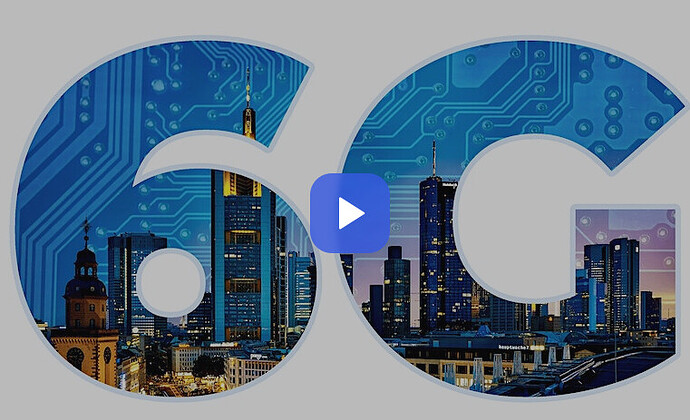Some of the key features of 6G include:
Ultra-wideband: 6G networks will operate in the terahertz (THz) frequency band, which offers much wider bandwidth than the frequencies used by 5G. This will enable 6G to support much higher data rates, up to 100 Gbps or more.
Ultra-low latency: 6G networks are expected to have latency of less than 1 microsecond, which is 1,000 times faster than 5G. This will enable real-time applications such as augmented reality (AR) and virtual reality (VR) to be used without any lag.
Ultra-intelligence: 6G networks will use artificial intelligence (AI) to optimize network performance and provide personalized services to users. For example, AI could be used to predict traffic patterns and allocate network resources accordingly.
Ultra-spatialization: 6G networks will be able to provide spatial awareness, which means that they will be able to track the location of devices with much greater accuracy than 5G. This will enable new applications such as autonomous driving and remote surgery.
The development of 6G is still in its early stages, but it is expected to be commercially available in the early 2030s. 6G has the potential to revolutionize the way we communicate and interact with the world around us.
Here are some of the potential applications of 6G technology:
Immersive AR/VR experiences: 6G’s ultra-high data rates and low latency will enable truly immersive AR/VR experiences. This could be used for gaming, education, training, and entertainment.
Autonomous driving: 6G’s ultra-low latency and spatial awareness will enable autonomous vehicles to communicate with each other and with the infrastructure around them in real time. This will make autonomous driving safer and more efficient.
Remote surgery: 6G’s ultra-low latency and high data rates will enable surgeons to perform remote surgeries. This could be used to provide medical care to people in remote areas or to train surgeons in new procedures.
Smart cities: 6G’s high capacity and low latency will enable smart cities to be more efficient and sustainable. This could be used for things like traffic management, energy management, and environmental monitoring.
6G is still in its early stages of development, but it has the potential to revolutionize the way we live and work. It is clear that 6G will be a major driver of innovation in the years to come.
Check out world 6G experts presenting on 6G Research Studies!
